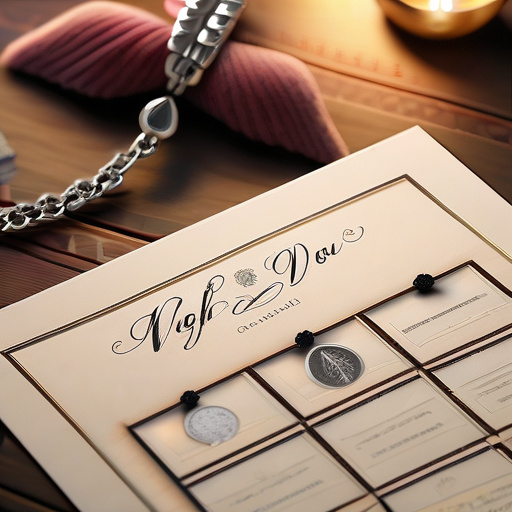The Significance of the Number 3 in History
The number 3 has held profound importance across civilizations, often symbolizing balance, harmony, and completeness. Ancient Egyptians revered it in their triads of gods, such as Osiris, Isis, and Horus. Similarly, the Greeks celebrated the three Fates, who controlled human destiny. This recurring pattern highlights how 3 served as a foundational element in shaping cultural and spiritual beliefs.
In Roman culture, the phrase „omne trium perfectum” (everything that comes in threes is perfect) underscored the number’s significance. The Romans also divided time into past, present, and future, further embedding 3 into their worldview. Meanwhile, Chinese philosophy embraced the triad of heaven, earth, and humanity as a core principle. These examples reveal how 3 transcended geographical boundaries.
The number 3 also played a pivotal role in governance and law. For instance, the three branches of government—executive, legislative, and judicial—emerged as a model for modern democracies. Additionally, the three-estate system in medieval Europe reflected societal hierarchy. Such applications demonstrate how 3 provided a framework for organizing complex systems.
From art to architecture, the rule of 3 influenced creative expression. The Renaissance’s use of triangular compositions in paintings, like da Vinci’s „The Last Supper,” exemplifies this. Even today, 3 remains a cornerstone in design and storytelling, proving its timeless appeal. Its historical legacy continues to inspire contemporary thought and innovation.
The Power of 3 in Storytelling and Communication
The number 3 is a cornerstone of effective communication, making messages memorable and engaging. Stories often follow a three-act structure—beginning, middle, and end—to create a satisfying narrative arc. Similarly, jokes rely on the „rule of three” for punchlines, ensuring humor lands perfectly. This pattern taps into the brain’s natural preference for triadic structures.
In rhetoric, the „tricolon” technique uses three parallel clauses to emphasize points. For example, Julius Caesar’s „Veni, Vidi, Vici” showcases the power of brevity and rhythm. Moreover, slogans like „Stop, Drop, and Roll” leverage 3 for clarity and recall. Such examples highlight how trios enhance persuasiveness and retention.
Beyond language, visual storytelling thrives on threes. Photographers use the „rule of thirds” to compose balanced images. Likewise, filmmakers often frame scenes with three focal points to guide viewer attention. These techniques underscore how 3 shapes perception and emotion across mediums.
The Rule of Three in Writing and Speeches
The rule of three is a timeless principle in writing, ensuring ideas resonate with audiences. For instance, Abraham Lincoln’s „Government of the people, by the people, for the people” exemplifies its impact. This structure creates a rhythmic cadence, making speeches more compelling. Additionally, it simplifies complex concepts, aiding comprehension.
In literature, three-part lists create emphasis and closure. Consider „Life, Liberty, and the Pursuit of Happiness” from the U.S. Declaration of Independence. Such phrasing sticks in memory due to its triadic harmony. Furthermore, fairy tales like „Goldilocks and the Three Bears” use 3 to build tension and resolution.
Modern marketing also exploits this rule. Taglines like „Just Do It” (Nike) or „I’m Lovin’ It” (McDonald’s) often imply a third, unspoken element. This subtlety engages audiences, inviting them to complete the thought. Thus, the rule of three remains a versatile tool across disciplines.
Famous Trios in Literature and Film
From „The Three Musketeers” to „Harry, Ron, and Hermione,” trios dominate storytelling. These groups often represent distinct archetypes—leader, skeptic, and heart—creating dynamic interactions. Moreover, their conflicts and camaraderie drive plots forward, captivating audiences.
In film, franchises like „The Lord of the Rings” center on trios like Frodo, Sam, and Gollum. These relationships explore themes of loyalty and betrayal. Similarly, animated classics like „Shrek” feature triads (Shrek, Donkey, Fiona) that balance humor and heart. Such ensembles prove 3 is magic for character chemistry.
3 in Mathematics and Science
The number 3 is fundamental in mathematics, appearing in shapes, equations, and theories. Triangles, with their three sides and angles, are the simplest polygons, forming the basis of geometry. Furthermore, the Pythagorean theorem revolves around right-angled triangles, linking 3 to one of math’s most famous formulas.
In science, 3 defines spatial dimensions—length, width, and height—governing our physical world. It also appears in Newton’s three laws of motion, foundational to physics. Additionally, the three states of matter (solid, liquid, gas) simplify material classification. These examples reveal 3’s role in structuring scientific understanding.
Beyond basics, 3 emerges in advanced concepts like the three-body problem in astrophysics. This puzzle explores gravitational interactions among three celestial bodies, challenging scientists for centuries. Similarly, trilobites, extinct marine arthropods, had three-lobed bodies, showcasing 3’s prevalence in nature.
The Triangle: Geometry’s Fundamental Shape
Triangles are the building blocks of geometry, offering stability and versatility. Engineers use triangular trusses in bridges because they distribute weight evenly. Meanwhile, artists employ triangles to create depth and perspective in compositions. This duality underscores their practical and aesthetic value.
In nature, hexagonal honeycombs derive from interconnected triangles, maximizing space efficiency. Even molecular structures, like water’s bent shape, reflect triangular principles. Thus, the triangle’s influence spans from macro to micro scales.
The Third Dimension in Physics
The third dimension adds depth to our perception, transforming flat planes into tangible objects. In physics, 3D space enables phenomena like gravity and motion to unfold. Moreover, Einstein’s theory of relativity integrates time as a fourth dimension, yet 3 remains foundational.
Holography and 3D printing exploit this dimension, revolutionizing industries. These technologies manipulate depth to create lifelike images and prototypes. Consequently, the third dimension continues to drive innovation and creativity.
Cultural and Religious Symbolism of 3
The number 3 permeates global cultures, often representing divine harmony and cyclicality. In Christianity, the Holy Trinity (Father, Son, Holy Spirit) embodies this symbolism. Similarly, Hinduism’s Trimurti—Brahma, Vishnu, Shiva—reflects creation, preservation, and destruction. These triads illustrate 3’s spiritual significance.
Celtic traditions venerated the triple goddess (maiden, mother, crone), symbolizing life’s stages. Meanwhile, Native American cultures embraced the three worlds—upper, middle, lower—as cosmic layers. Such beliefs highlight 3’s universal resonance across mythologies.
In art, Dante’s „Divine Comedy” divides into three parts—Inferno, Purgatorio, Paradiso—miroring spiritual ascent. Likewise, musical triads (three-note chords) form harmony’s backbone. These creative uses reinforce 3’s cultural ubiquity.
Even modern idioms like „third time’s the charm” reflect enduring superstitions. Whether in rituals or daily life, 3 continues to inspire awe and reverence.
Trinities in World Religions
Trinities appear in diverse faiths, underscoring 3’s sacred role. Christianity’s Holy Trinity unites three personas in one deity, illustrating unity in diversity. Similarly, Hinduism’s Trimurti balances cosmic forces, ensuring universal order.
Buddhism’s Three Jewels—Buddha, Dharma, Sangha—guide spiritual practice. Meanwhile, Taoism’s „Three Treasures” (compassion, moderation, humility) offer ethical foundations. These triads provide frameworks for worship and morality.
Even ancient Egyptian religion featured triads like Isis, Osiris, and Horus, symbolizing family and resurrection. Such parallels reveal 3’s cross-cultural spiritual power.
Superstitions and Folklore Surrounding the Number 3
Folklore abounds with trios, from three wishes to three-legged symbols of luck. In many cultures, knocking three times wards off evil spirits. Similarly, third sons in fairy tales often triumph, reinforcing 3’s auspiciousness.
Conversely, some view 3 as ominous, like the three knocks signaling death in Irish lore. These contradictions showcase 3’s dual nature—both blessed and feared. Regardless, its presence in superstitions endures.
The Psychological Impact of 3
The human brain processes information in threes more efficiently, enhancing memory and comprehension. Marketing exploits this with slogans like „Snap, Crackle, Pop” (Rice Krispies). Additionally, three-step instructions (e.g., „Ready, Set, Go”) simplify learning.
Studies show that triadic structures reduce cognitive load, making content more digestible. This explains why presentations often follow a three-part format. Moreover, three-character emojis convey emotions succinctly. Thus, 3 optimizes communication.
Even in decision-making, people prefer three options—too few feels limiting, too many overwhelming. This „Goldilocks effect” confirms 3’s psychological sweet spot.
3 in Everyday Life: Patterns and Habits
Daily routines often revolve around threes, from meals (breakfast, lunch, dinner) to traffic lights (red, yellow, green). This pattern streamlines activities, fostering predictability. Similarly, three-step skincare routines (cleanse, tone, moisturize) simplify self-care.
Sports also embrace 3, like triple jumps or hat-tricks in soccer. These milestones celebrate achievement in triads, reinforcing 3’s cultural imprint.
Fun Facts and Trivia About the Number 3
The number 3 is the only natural number equal to the sum of its predecessors (1+2). Additionally, three is the first odd prime number, making it mathematically unique. Meanwhile, three-leaf clovers are common, but four-leaf ones are rare—hence their luck association.
In space, Earth is the third planet from the sun, a position enabling life. Similarly, three primary colors (red, blue, yellow) form all other hues. These quirks highlight 3’s fascinating presence in our world.
From atomic particles (proton, neutron, electron) to Olympic medals (gold, silver, bronze), 3 structures reality. Its omnipresence makes it a number worth celebrating.


